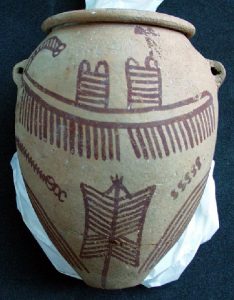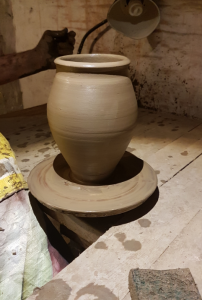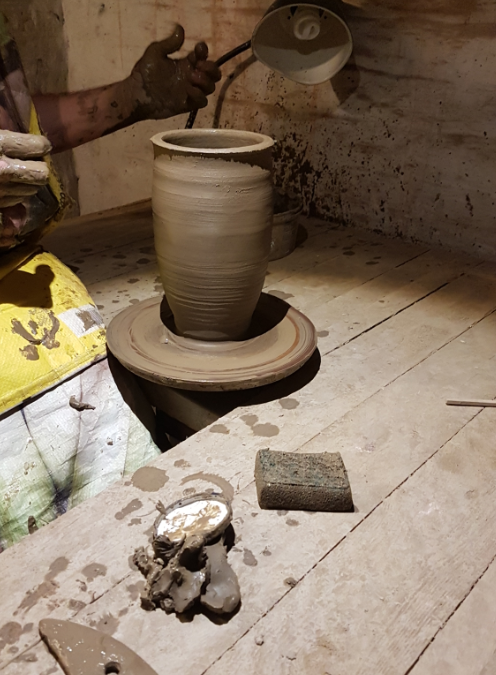
Juan shapes the clay first into a cylinder-shape before forming the body of the vessel
Experimental archaeology can be a very useful way to envisage past manufacturing processes, and in particular to gain a better understanding for how craftspeople engaged with their materials. As scholars it’s tempting to sit and study – for instance pottery manufacture – in a library or an office, far from clay, temper and sand. But being able to go out and see genuine craftspeople working with ancient techniques is not just a fantastic reminder to get ones head out of the clouds, but also a way to see how the different scholarly theories measure up in the face of reality.
The Egyptology staff here at the University are both very interested in material culture, with Dr Nielsen having published on ancient Egyptian ceramics (see here) and Dr Tyldesley having published both on Egyptian and non-Egyptian manufacturing processes and material remains (for full details, see here).
A few weeks ago, Dr Nielsen had the pleasure of joining future Manchester PhD student Chris Bebbington and Dr Nick Overton (Lecturer in Archaeological Practice) on a fieldtrip to join potter Juan Ignacio Jiménez Rivero in his Manchester workshop to have a look at the pottery manufacturing process. Juan has kindly agreed to produce a replica of a Predynastic Egyptian D-Ware vessel which can be used for teaching sessions at the University.
The process itself is fascinating – Juan is using an iron-rich local clay, not dissimilar to the iron-saturated silt utilised throughout the Nile Valley. Rather than using a turn-table or and hand-moulding technique such as coil-building or paddle-and-anvil, Juan uses a kick-wheel, very similar to one depicted in Egypt from the 26th Dynasty onwards. What was most surprising about the process was the speed with which a shapeless lump of clay was mixed, sand added, and the vessel teased into a shape very reminiscent to anyone studying Predynastic pottery.
The next step is decorating and firing the vessel – hopefully this will be an opportunity for another fieldtrip to the potter’s workshop!

An example of an ancient D-Ware vessel, acc. no. 3133 in the Manchester Museum (from Naqada)

The finished vessel – prior to decorating, firing and attaching lug-handles







Recent Comments